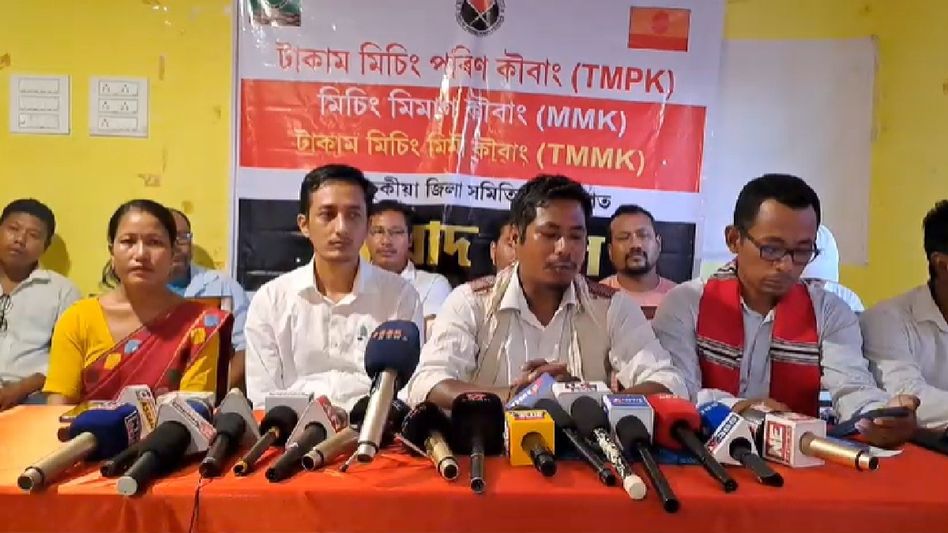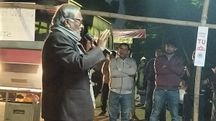Assam: Mising Organizations unite, defend resettlement efforts in Tinsukia's Laika
In response to growing protests over the government's initiative to rehabilitate 412 families from the Laika Ban village in the Paharpur area, three prominent Mising tribal organizations—Takam Mising Parin Koubung (TMPK), Mising Mimag Kaubang (MMK), and Takam Mising Mimou Koubung (TMMK)—addressed a joint press conference at Jagun in the Tirap Mouza today, September 12

In response to growing protests over the government's initiative to rehabilitate 412 families from the Laika Ban village in the Paharpur area, three prominent Mising tribal organizations—Takam Mising Parin Koubung (TMPK), Mising Mimag Kaubang (MMK), and Takam Mising Mimou Koubung (TMMK)—addressed a joint press conference at Jagun in the Tirap Mouza today, September 12
The leaders reacted sharply to allegations targeting the Mising community as "outsiders," stressing the need for unity among Assam's ethnic groups.
During the conference, the leaders explained that the Laika-Bongaon residents originally hail from the Murkongselek region, which was devastated by the 1950 earthquake. Following the disaster, the Assam government resettled these people in two forest villages within the Dibru-Saikhowa area. However, after the establishment of Dibru-Saikhowa National Park in 1999, many residents were deprived of essential government facilities, leading to their current struggle for resettlement in more suitable locations.
Also read: Saving Assam's Golden Langurs through innovation and community efforts
To resolve this longstanding issue, the Assam government recently initiated a rehabilitation program to relocate 572 families from Laika to areas under the Digboi Forest Division, including Namphai Tapu and Paharpur. While 160 families have already been relocated to Namphai Tapu, the government is rapidly working to settle the remaining 412 families in Paharpur. However, this move has sparked protests from local groups.
The Mising organizations distanced themselves from the protests, condemning the narrative of some groups labeling the Mising people as outsiders. "We have always fought for unity and harmony among Assam’s tribal groups, and we will continue to do so," said the leaders. They emphasized the deep-rooted connection between the Mising people and the indigenous Khilonjiya population, which includes communities like the Maran, Matak, Ahom, Adivasi, Chutia, Rabha, Tiwa, and others.
The leaders further criticized what they described as a divisive leader from a particular tribal organization, accusing him of attempting to disrupt the unity and harmony among Assam's ethnic groups. They questioned the logic behind claims that Mising people, who have long lived in areas such as Longtong, Sinaki, Golden Tribe, and Namphai Tapu, should now be barred from resettling in the Tirap Tribal Belt.
"The Mising people are not outsiders," the leaders affirmed, adding that they are among the oldest indigenous communities in Assam, being the second-largest tribal group in the state. They argued that tribal belts were established to protect such communities and emphasized that any attempt to exclude Mising families from the Tirap Tribal Belt would not be tolerated.
The Mising leaders asserted that no one has the moral right to single out a particular community in protest. They reiterated their commitment to preserving unity among Assam’s tribal populations, warning against attempts to sow division.
Copyright©2026 Living Media India Limited. For reprint rights: Syndications Today









